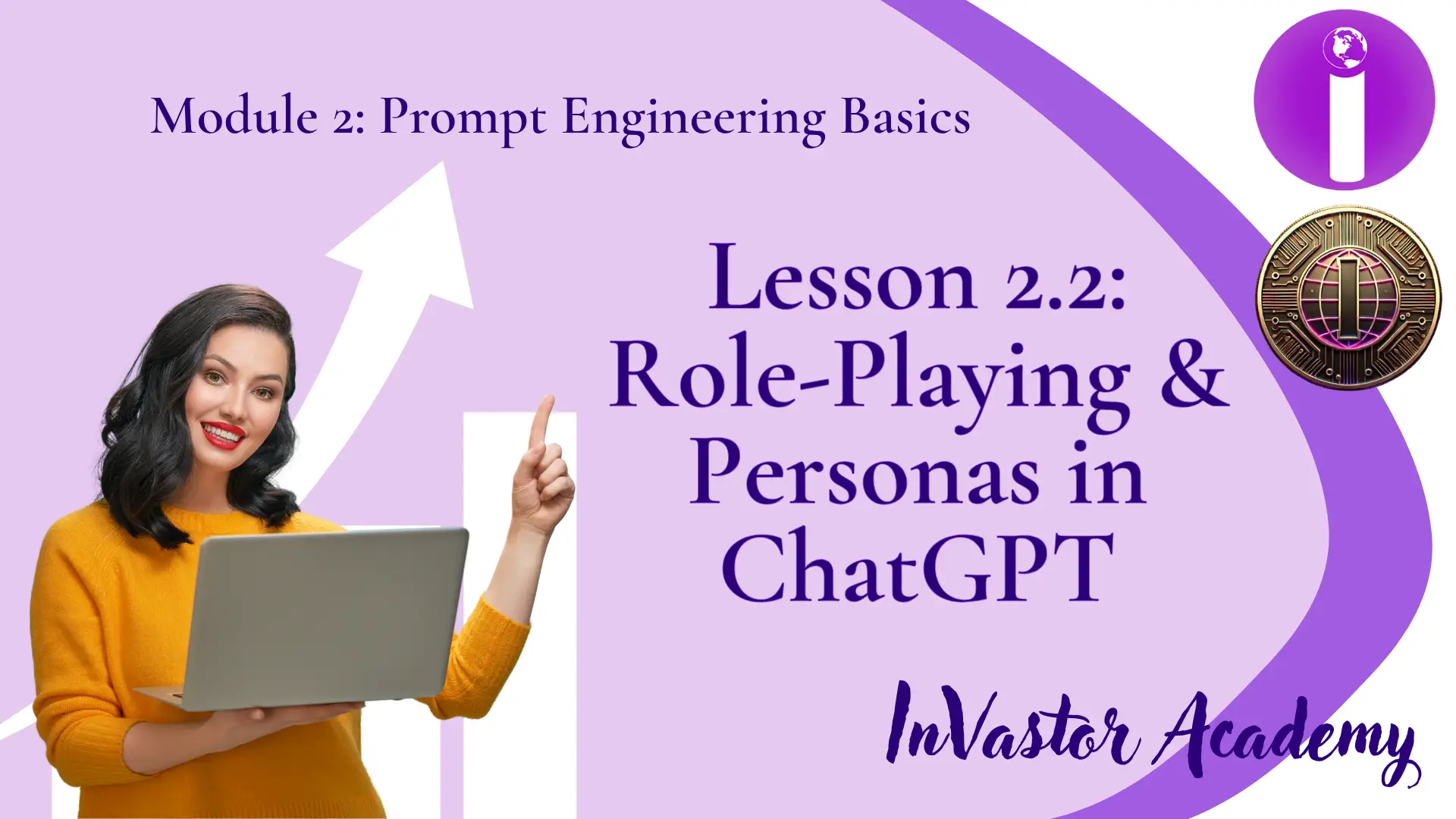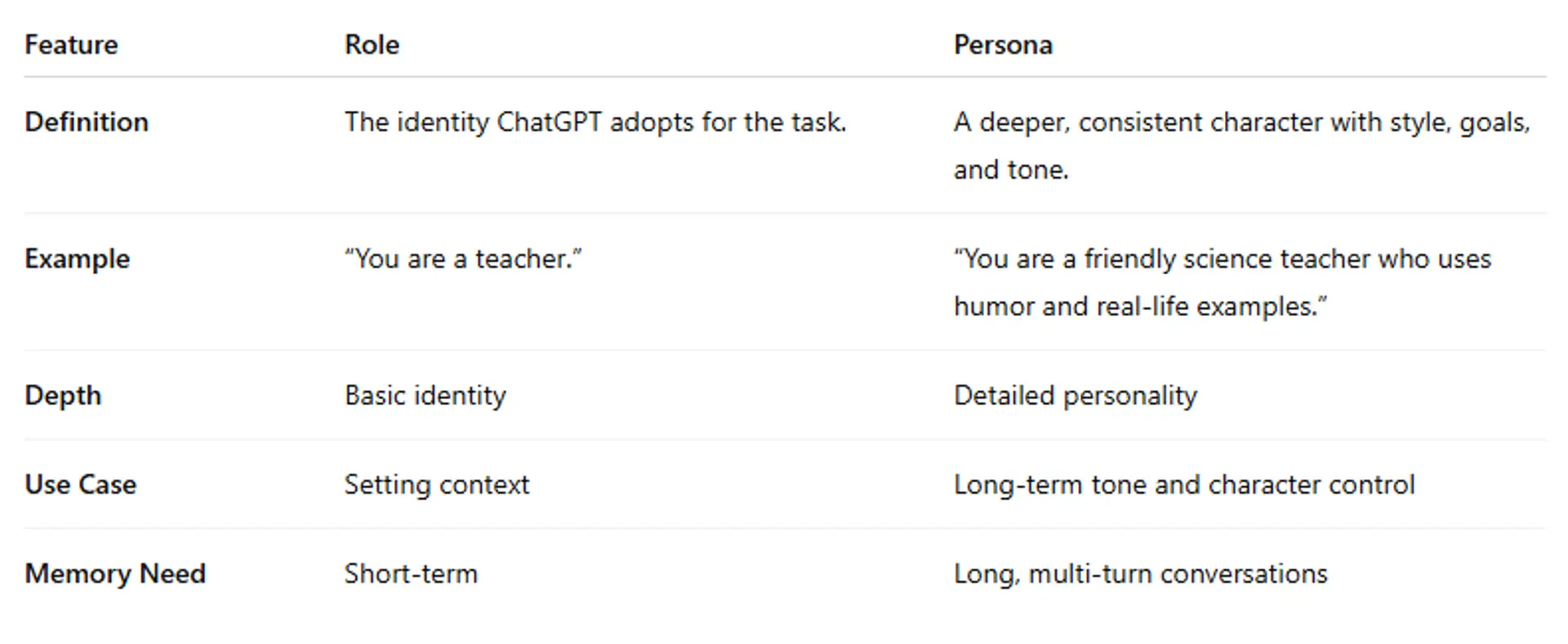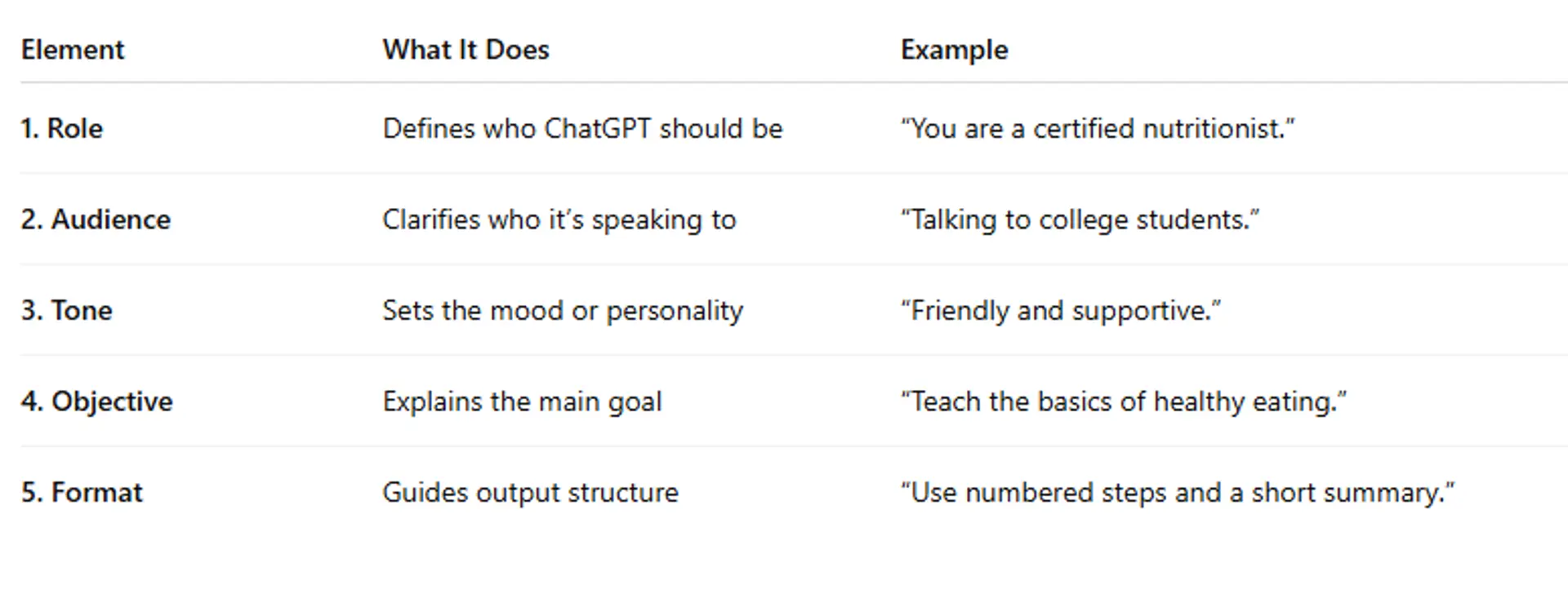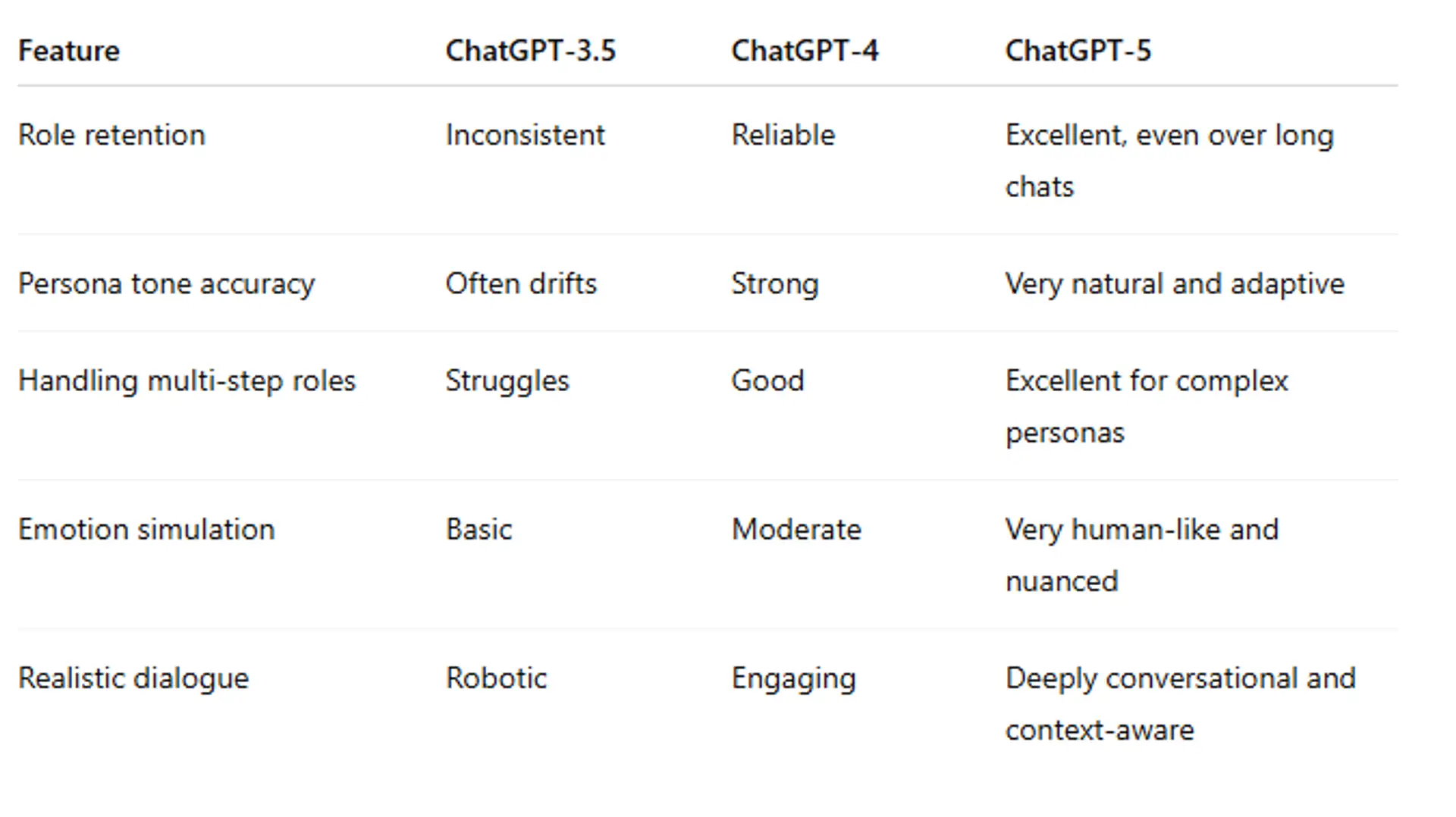

Module 2: Prompt Engineering Basics, Lesson 2.2 — Role-Playing & Personas in ChatGPT
Module 2: Prompt Engineering Basics
Lesson 2.2 — Role-Playing & Personas in ChatGPT
Lesson Objective
By the end of this lesson, you will be able to:
- Explain what “role-playing” and “persona” mean in ChatGPT.
- Design prompts that assign roles and guide ChatGPT’s behavior effectively.
- Compare how ChatGPT-3.5, 4, and 5 handle persona consistency and tone.
- Apply personas to create specialized outputs (teaching, coding, writing, and more).
1. What Are Roles and Personas?
Roles and personas are powerful prompt engineering techniques that allow you to shape ChatGPT’s identity and communication style.
When you assign a role, you tell ChatGPT who it is supposed to be.
When you create a persona, you go further — you define how it behaves, how it talks, and what values or goals guide its responses.
Think of ChatGPT as a talented actor.
You’re the director, giving it a script, context, and tone. The clearer your direction, the better its performance.
2.Why Role-Playing Works
ChatGPT predicts text based on the patterns you set.
When you assign a role, it immediately narrows its “thinking space” — focusing only on the style, vocabulary, and logic that match that role.
Example:
Generic Prompt: “Explain the stock market.”
➡️ Output: A broad explanation with definitions.
Role Prompt: “You are a financial advisor. Explain the stock market to a beginner investor using simple examples.”
➡️ Output: Structured, simplified explanation with practical advice.
Result: The role makes ChatGPT sound like an expert, not a textbook.
3. Difference Between Roles and Personas

Tip: Use roles for quick tasks, and personas for ongoing projects or branded voices.
4. The Structure of a Persona Prompt
A good persona prompt includes these five elements:

5. Persona Examples in Action
🧑🏫 A Teacher Persona
“You are a patient high school math teacher. Explain algebra to a beginner using simple language, relatable examples, and one short exercise at the end.”
Result: Warm tone, step-by-step teaching, suitable for students.
👩💻 A Developer Persona
“You are a senior Python developer. Write a function that sorts a list of names alphabetically and explain the logic clearly for a beginner coder.”
Result: Code + explanation in a professional developer tone.
💼 A Marketing Persona
“You are a creative marketing strategist. Write three catchy headlines for a vegan skincare brand, each under 10 words, using an upbeat tone.”
Result: Short, creative, on-brand headlines.
🧘 A Wellness Coach Persona
“You are a mindfulness coach. Provide three quick daily practices for managing stress, using calm and encouraging language.”
Result: Gentle, positive, practical advice.
6.Comparing ChatGPT-3.5, 4, and 5 with Personas

Note: GPT-5 can remember multiple persona layers (e.g., “a teacher who also acts like a mentor”) and maintain tone over multi-turn discussions.\
7.Building Your Own Persona Step-by-Step
Step 1️⃣ — Choose a Role
“You are a personal finance coach.”
Step 2️⃣ — Define the Audience
“You are helping young adults learning to budget.”
Step 3️⃣ — Add Tone and Purpose
“Use an encouraging and conversational tone to build confidence.”
Step 4️⃣ — Specify Output Format
“Provide your answer in 5 short bullet points.”
Final Prompt:
“You are a personal finance coach helping young adults learn to budget. Use an encouraging, conversational tone and give 5 practical budgeting tips in bullet points.”
Result: Friendly, expert-sounding guidance that feels human.
8. Advanced Persona Tips
- Combine roles for layered tasks:
- “You are both a travel blogger and a local historian. Write about Paris through the lens of its hidden history.”
- Set emotional tone:
- Add words like “enthusiastic,” “calm,” “empathetic,” or “professional.”
- Use memory reminders:
- “Stay in character as a helpful teacher throughout our conversation.”
- Establish limitations:
- “If you don’t know something, say you’re unsure instead of guessing.”
These instructions reduce errors and make personas more believable.
9. Learn More with the Videos Below
They can learn additional concepts with the videos below:
🎥 Prompt Engineering: Personas & Use Cases
🎥 The Most Powerful ChatGPT Prompts Right Now
🎥 95% of People STILL Prompt ChatGPT-5 Wrong
Lesson Quiz 2.2
Please complete this quiz to check your understanding of the lesson. You must score at least 70% to pass this lesson quiz. This quiz counts toward your final certification progress.
Answer the quiz using the Google Form below.
Conclusion
Roles and personas are the bridge between generic answers and expert results.
By defining who ChatGPT is and how it should think and communicate, you create focused, realistic, and professional responses every time.
In the next lesson, 2.3 — Chains of Prompts / Multi-Step Interactions, you’ll learn how to connect multiple prompts together — teaching ChatGPT to think in steps and manage complex workflows smoothly.
Previous and Next Lessons:
Module 2: Prompt Engineering Basics, Lesson 2.1 — Anatomy of a Good Prompt
Module 2: Prompt Engineering Basics, Lesson 2.3 — Chains of Prompts / Multi-Step Interactions
Related Posts
© 2025 Invastor. All Rights Reserved

User Comments